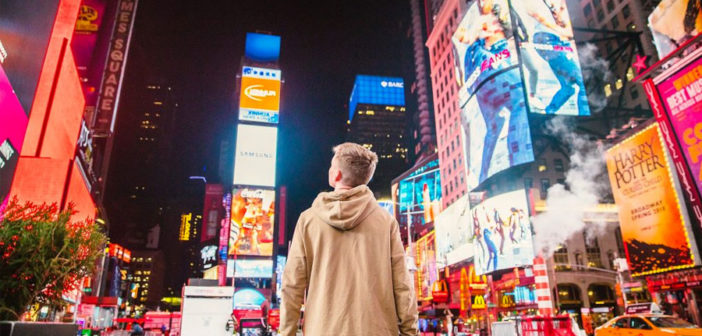It’s a Friday afternoon in the mall, and shoppers are going about their business, buying clothes ahead of the weekend; others are lining up at a new cupcake stand. While store owners watch the hustle and bustle with hopeful eyes, computers are making their own observations beneath the surface.
As the stream of shoppers circulate, computers embedded in the digital billboards along the concourse get a distinct ping. Then another. By analyzing the cell phones’ search and web histories, the computers see a critical mass of adolescents congregating nearby.
In moments, the digital billboard replaces the home furniture ad displayed for the earlier soccer-mom crowd with an ad for the new spring line at an apparel store on the third floor. As the flock of teens discuss their next destination, they start to talk about the sale. Sure enough, one of them needs a few new shirts for the upcoming season.
This is just one part of the quiet data-driven revolution taking place in out-of-home (OOH) advertising.
This advertising medium, once thought of as modest and old-fashioned, is quickly advancing to compete with more technologically sophisticated ad formats. A data-driven revolution is occurring alongside the emergence of advanced tools that automate everything from data aggregation to planning and buying.
Three main areas of OOH advertising have already experienced major advancements with more to come: digital billboard integration with mobile advertising, next-generation rating systems, and the partnership of mobile data firms with OOH ad suppliers.
Ad buyers are also realizing some unique advantages of OOH when compared to digital formats. This is important as multiple studies have shown consumers’ dislike for digital ads. Accenture found 74% of consumers say advertising interruptions do not match their personal interests, while in 2015, the IAB found 45 million users are actively using ad blocking software.
OOH, alternatively, offers brands a non-invasive way of reaching consumers.
Old questions around OOH impressions are being answered with increasing sophistication. In years past, the only measure possible for roadside billboards was how many cars passed a given point on the road.
Now, Geopath, the industry’s ratings organization, measures much more, including the number of passengers in a vehicle along with their demographic data, billboard density, positioning, distance from road, and even eye-tracking. (This graphic from Geopath explains in further detail.)
Along with the improved impression data for roadside billboards, there are more advancements being made in data collection and aggregation. Experts are looking at creating more granular data sets on an anonymized level. For example, data is being aggregated for smaller areas, such as a square block or per meter, which would help advertisers fine-tune the timing of their ad’s appearance, based on the amount and demographic of people in a specific area.
Origin and destination tracking is also helping OOH advertisers reach the right audiences and save money by avoiding unnecessary expenses.
For example, commuters may be making a daily round trip from their suburban home to the office. Local restaurants at their destination may not benefit from advertising their dinner menus to these commuters on their way home. The market vs. out-of-market impression data now being analyzed helps planners understand the where and when to advertise.
The upgrades in OOH are hardly taking place in a silo. Mobile data firms are partnering with OOH firms to serve ads and help conversion rates, either at brick-and-mortar locations or via ecommerce. In addition to the digital-billboard scenario described above, mobile devices are increasingly important when it comes to geofencing, allowing location-based ads to be served when a potential customer “breaks” a digital fence.
Tracking mobile devices allows businesses to understand how consumers are engaging with competitors. Online search activity is now tied into OOH. A recent Nielsen study found that OOH ads are the most effective offline medium in driving online activity as 46% of US adults used a search engine to look up information after seeing or hearing an OOH ad.
But arguably, the most important aspect of the integration of mobile and OOH is the conversion rate. An earlier OOOA study found that consumer action response, such as purchases, online searches and brand-related social media activity, occurred 22% of the time within 30 minutes of exposure to OOH advertising.
Marketers are moving away from thinking about channels and more about the consumers’ journey and location. While being agnostic about the medium is helpful in having flexibility in planning, the marriage of data and OOH can be a powerful force — a less intrusive, more targeted way of reaching customers.
–
This article first appeared in www.mediapost.com
Seeking to build and grow your brand using the force of consumer insight, strategic foresight, creative disruption and technology prowess? Talk to us at +9714 3867728 or mail: info@groupisd.com or visit www.groupisd.com

